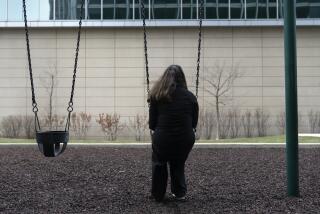The Victims
- Share via
Some common characteristics of youths who commit suicide:
* More girls make attempts, but boys are four times more likely to kill themselves; they choose more lethal methods and are less likely to seek help for depression.
* Although attempts are high among some minority groups, whites are twice as likely to kill themselves.
* At least half of the youths who die have experienced bouts of depression.
* About 42% of boys and 12% of girls who kill themselves have abused alcohol or other substances.
Risk Factors
* Access to firearms even firearms locked up in the home.
* Poor communication with parents.
* Neglect or sexual, physical or emotional abuse.
Other factors include youths who have:
* Had a recent loss, such as an early loss of a parent.
* Few social supports, dysfunctional parents, parents who abuse substances or parents who experience marital discord.
* A sense of hopelessness.
* Experienced early puberty, among girls.
* Learning disabilities.
* Homosexual orientation.
* Protestant religious affiliations, more so than Catholics or Jews.
* Made frequent moves or have had their lives disrupted.
* Perfectionist tendencies, high achievement or impulsive, aggressive or anxious tendencies.
* Genetic predisposition to depression.
* A neurochemical abnormality that results in lower levels of the brain chemical serotonin; a mother who had hypoxia at delivery; a close relative who was a suicide; a family history of mental disorders.
Warning Signs
Reports suggest that as many as four in five suicide victims give people clues. Some of the most common warning signs to look for:
* Change in eating, sleeping habits.
* Heavy use of alcohol or drugs.
* Suicide threats--direct or indirect--such as “I might as well be dead” or “I won’t be a problem for you much longer.”
* Preoccupation with death.
* Withdrawal from friends, family and regular activities. Isolation.
* Violent actions, rebellious behavior or running away. Increased irritability or anger.
* Unusual neglect or personal appearance.
* Extreme anxiety. Crying easily.
* Loss of interest in pleasurable activities.
* Difficulty concentrating; a decline in the quality of schoolwork.
* Giving away prized possessions.
* Becoming suddenly cheerful after a period of depression. A person may have a change of mood over relief that they have made definite plans to die.
Sources: American Academy of Child and Adolescent Psychiatry; California Department of Mental Health, Office of Prevention; David Shaffer, Columbia University
Where to Go for Help
If you are feeling suicidal:
* Los Angeles Suicide Prevention Center Crisis Line, (310) 391-1253, 24 hours
* Teen Line, (310) 855-HOPE or 800-TLC-TEEN, 6 p.m. to 10 p.m.
* Los Angeles County Dept. of Mental Health, Psychiatric Information Service, (213) 226-5581
* Pasadena Mental Health Center, (818) 798-0907, 9 a.m. to 12 a.m.
* Orange County: Hot Line Help Center, (714) 441-1414, 24 hours
* New Hope Crisis Intervention Hotline, (714) NEW-HOPE, 24 hours
* Riverside County: Riverside Help Line, (909) 686-4357, 24 hours
If you have lost relatives or friends to suicide:
* Institute for Suicide Prevention, Survivor After Suicide Program, (213) 386-2622
* Los Angeles Suicide Prevention Center, Survivors After Suicide Program, (310) 390-6610, Ext. 324
* The Compassionate Friends, Los Angeles chapter, (310) 474-3407; Orange County, (714) 552-2800; Inland Empire, (909) 794-1500; Ventura County, (805) 526-7826
* University of Judaism Suicide Support Group, (310) 476-9777
* Survivors of Suicide/SOS, Crystal Cathedral, Garden Grove, (714) 971-4032
More to Read
Sign up for Essential California
The most important California stories and recommendations in your inbox every morning.
You may occasionally receive promotional content from the Los Angeles Times.













